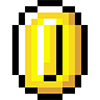-
Posts
1,441 -
Joined
-
Last visited
-
Days Won
8
Content Type
Profiles
Forums
Articles
Downloads
Gallery
Blogs
Everything posted by sundogak
-
The difference with Nocta’s situation and yours is you are still pointing to the ux0 directory. Point to completely empty directory (no sub directories).
-

Missing Games Checker Plugin
sundogak commented on AgentJohnnyP's file in Third-party Apps and Plugins
For this one specific case, an update was made (I submitted change) that was reflected in the LB DB and had not yet been cascaded to the XML that is downloaded (it does now I just checked). Changes can take time to reflect in the XML depending on how the approval cycle goes (but usually 24 hours in my experience). This is no different than how LB works things as it looks to downloaded XML for matching/updates. Personally, I don't see why you would need to make any changes as your tools works. In fact the reason I saw this particular issue with the LB DB incorrect was with your tool.- 56 comments
-
Nothing with the wheel style of PinupPopper. However there is a vertical theme here: https://forums.launchbox-app.com/files/file/3925-vertical-vision/
-

pinball fx Pinball FX (Steam 2023) - LB How to Setup Direct Launch
sundogak replied to sundogak's topic in Troubleshooting
Updated first post XML and data folder files with two new tables. Will update the media post shortly. Data/XML current as of all tables released as of August 29, 2024. The Princess Bride Pinball - Table 184 Goat Simulator Pinball - Table 187 -

pinball fx Pinball FX (Steam 2023) - LB How to Setup Direct Launch
sundogak replied to sundogak's topic in Troubleshooting
I have been, with several updates since original post as tables come out. Those tables just came out yesterday (and terribly interesting in my view). But will get to them at some point. -
Have you looked in this thread and this aggregate download? I see several such as Music, Movies, and Karaoke that have several versions already completed.
-
Your theme will show in your Bigbox options. Not sure if what referring to as overlapping as don't see anything other than maybe the Nintendo Switch logo. If that is what referring to then issue is that logos are different sizing. You can get a consistent "de-facto" set here: Otherwise the spacing between logos is determined by the theme style. Many themes, particularly the one you show are setup for wider/rectangular logos on the wheel vs "square/circle" orientation. So for example, I use this ring type for platforms. There is a template for those here;
-
Cool glad got sorted. It has a learning curve but once you get process down it is just rinse and repeat (100s of times!) and advantage you can make something that looks good for your setup. I have looked for the style of ring you originally posted but could never find a PSD/XCF file if come across will post here. I probably have 20 different "ring styles" but that one for whatever reason seems to be illusive in PSD/XCF file format.
-
You have to have all of the following conditions for SCUMMVM to import under new process: 1) Emulator set with the default command lines auto populated (particularly with the -p -autodetect command): Auto Imports Turned On: New way will not work if not. ScummVM platform points to where you have your folders and EXE files exists for ScummVM files at root level. When it is finished auto importing it will only point to folder and not a EXE but will work as the "-p -autodetect" flag tells it to open up the first executable in the path. I never used the "original" way of LB and ScummVM so make a backup of your XML files before you start autoimport, just in case! I did have to do some cleanup on mine but mostly it worked. Caveats: this method is problematic and it is an issue in how ScummVM implemented the new command -p with -autodetect vs something unique to LB (if do via command line outside LB has same issues). There also isn't a lot of documentation other than the command itself at ScummVM site. If launch a game in this fashion any general items in the scummvm.ini will be used. However, it will not pickup any any customization in your ScummVM.ini for a specific game. It is a function of LB calling the game not by game ID but by the method of "find first EXE in path then run it". Thus for example I had shaders turned off on a few specific games but as doesn't look to game settings won't pick that up. You could go to the bother of setting up multiple scummvm.ini files but seems kludgy to me. Game saves also seem to have some issues but didn't test substantially as went back to my initial method (pointer game IDs).
-
1) Images to use to assemble logo: Make sure use PNG with transparency layer intact to make life easier (no checkerboard background). For example, I assume you got the images you attached from PNGEgg. At that site you cannot right-click and save but have to save via the download button and answer a Captcha to get a true PNG file with clear background. They want to keep people from mass scraping/ stealing the graphics they stole from other people 🤔 2) Tools: Step by step will vary depending on the tool. If doing more than a couple using a non layer "MS Paint" type tool will drive you crazy and eat a lot of time. GIMP (Free): I use Photoshop but did try GIMP many years back. It is similar in capabilities as Photoshop for this type of work. There should be videos/how to around web as next most popular tool to Photoshop. You may be able to use some PSD templates (photoshop file) in GIMP but many years ago when I tried it had issues (layers were messed up). They may have improved their compatibility now. If PSD doesn't work, then a GIMP format template is attached. It is same style as I used in Mario below (if turn off a "blue ring" layer they used). As this is free tool you can play with it and see how works. The trick of course is then finding a template in style you want. Tarcisio style is pretty common as used for most pinball system logo "packs" (Visual Pinball, FX3, etc.). Blank GIMP Template - Addiction Pinball & Pro Pinball.zip 3) Paint.Net (free): A youtube video on Paint.Net way of doing (free tool) 4) Photoshop (not free). You will find majority of templates are in this format as it is dominant tool for most graphics folks. I attached a template PSD file with the parts for the silver logo below that I threw together. It places things in layers so you can move items around. It "masks" the background around the ring so you don't have manually cut a circle. Gimp has a similar thought process. Although a learning curve for these tools once you get hang of it then they make cleaner logos and much easier to assemble. How assembled in Photoshop. Logo layer, Mario Layer, and Background. The "blue" layer at bottom is the clipping layer which clips the image above it (the background Mario screen) to be a perfect round circle so you don't have to manually do it. It also doesn't alter the image so you can drag it around to where want (just masks anything outside the ring). The Background you right-click and "create clipping mask" and the template takes care of trimming the BG to inner part of the ring only (so smooth edges). Once you get hang of GIMP or Photoshop and have a suitable template then just assemble at least 2 images (Background and Logo). If have the graphics the actually assembly is quick, maybe 10 minutes of figuring out what "looks good". You can of course add as many layers or items and get fancy but then adds to time/complexity. The "PNG" sites can be a pain but if you find an image that works it saves a bunch of time since someone else did the work of making the image with transparent background (which I find to be a pain). Lastly, I am not a "graphics guy" so just learned how with various trial and error for similar reasons you banged into. I wanted to fill the gaps and/or didn't like what was around. So with the above three options it should get you started. Tarcisio Style Wheel_1000x1000 - Mario Example.psdNote: I just tried this PSD in GIMP and seems to work but I didn't fiddle with it too much. So either of the two attached should work in GIMP. Tarcisio Style Wheel_1000x1000 - Mario Example.xcf Converted PSD file to GIMP format of the Mario ring example above. GIMP window with imported template.
-
Photoshop PSD templates are easiest as it takes care of the masking and can move logos, background image around. Next best is getting a blank image of ring you want with background that prefer then using a paint program to overlay the logo into the blank area. Some folks have done this via online programs (but tedious if you have a lot). Not as fancy as if use Photoshop (or Gimp which is free) but gets the job done. Examples for blank oval ring "blanks" for SNES and NES below (not in style you mentioned as don't have that PSD file). Having done about 400 of the Tarcisio pinball and 200 or so of the black pinball versions it can be a time suck. And you are talking thousands for systems you listed. There are some programs around that can take a base image and auto overlay a folder of other images such as logos (or via Photoshop Action script) but takes time to get it right and/or results can be middling.
-
Those are Teknoparrot/arcade and PC style rings/docklets (although one you show is gold, most I have seen are silver). For non-arcade not likely to be too many already completed (or at least I have never seen any complete sets). Quite a few logos here (but again mostly PC focus): https://www.deviantart.com/pooterman/gallery and here: I have PSD templates for these two types (black ring, silver ring Tarcisio style) if want and typically what see for pinball rings.
-
They go in your VPinMame directory as shown in prior post.
-
-
That was one I was going to suggest as well. But I did run into the file locking issue @JoeViking245 mentioned in his response above when I tried to replace manually. Tried closing plugin, then scrolling to different game but LB has tendency to be "aggressive" with file locking and then not releasing. Once closed out LB then released. So can imagine it may be difficult for plugin, particularly if displayed in the plugin's Gallery. One other item was thinking is showing the resolution info for the Existing Images Gallery. The plugin shows the resolution of the SteamGridDB image so already have that piece. Most of my PC cover/logo images are from SteamGrid but not all. Just allows skipping things I don't need to re-download. @JoeViking245 overall, another great plugin!.
-
@Ande85 Are you leaving the domain name blank when requesting the API key? You cannot leave blank but can put in anything in that field. You must have API key for LB to work for Steam imports. Second. You can verify if your account is really public by trying this in browser: http://steamcommunity.com/id/ ENTER YOUR STEAM PROFILE NAME Your profile name is upper right of your Steam Client window. If it resolves to your public page then that verifies not issue there.
-
-
If doesn't work in CEMU won't ever work in LB. Verify the games work in CEMU and if not likely encryption issue. The main issue is you have a mixture of different file types. Encrypted files such as WUX, WUD, WUP, or folders with files like "*.app" need to have an encryption key in the Keys.txt file in the CEMU base directory (see snap below) OR they need to be decrypted (which still needs keys but only one time). WUP to my knowledge (one you listed in your snap as shows NUS in TItle Manager) is encrypted (if only see "*.app files" or one file with a WUP extension). NUS files within a folder can be either encrypted or not depending on tool used to download from servers. Keys are specific to the game/region. You must have SOME keys as you said you were able to launch some games within CEMU. However, you must also be missing some as your WUX file isn't launching within CEMU. A Google search for "Wii U Keys latest" will get you a file about the 4th one down (backup your existing one!). In the keys.txt text file if you do search for the title ID for that game and if it is present then CEMU will run game. RPX files are decrypted game files (and no longer need keys). The default LB setup assumes you are pointing to RPX file, or decrypted WUA or encrypted WUX/WUD file with corresponding key in CEMU. So you have few choices. Make sure you have keys so CEMU can be used to launch the encrypted file/folder, use install feature in CEMU which will decrypt NUS files, or use a tool like CDecrypt (use google, there are also many other tools around) which makes the folders and RPX files needed. WUA files are also option as they are decrypted and compressed into one file but they can only be used for emulation (not for real Wii U). If just doing emulation, WUA is easiest and smallest and "all in one" file. WUA files you can use LB default emulator setup and simply point to WUA file. You can also make WUA files from within CEMU via Tools menu and Title list. If you have a few games working in CEMU and don't want to bother with figuring out the above or downloading other files, or decrypting, then this way of launching the game in LB will always work no matter the type as it uses CEMU's title list to launch the game (again must work in CEMU and be installed so see in Game list in CEMU). This process differs from default settings for CEMU in LB. CEMU will launch any game if you use the -t flag and the corresponding title ID in command line. See note at end about drawbacks, as time consuming if talking 100s of games. We can use this process in LB as follows: 1) Setup CEMU emulator to use the "-t" (title) option. It looks like this (Note the -t option vs LB default which uses -g which indicates path to game files). Also make sure to check the two boxes below this to remove quotes and folder path. Now you need to point LB for the "ROM" or "Game" to a pointer file that contains the title ID in the file name (not inside the text file). It will look something like this and where you place it doesn't matter as long as you point to this file in LB. Where you get the Title IDs is within CEMU. Fortunately, it has a "right-click" option to copy the Title ID. You can then paste this in the dummy text file name. What you are ultimately telling CEMU is to launch a game with the title ID in its installed DB. In my example I pasted in the Title ID for "6-Hand Video Poker" into the text file name (no contents inside text file) which is 00050000101d7a00.txt Import this text file as the game "ROM". Ignore my path I have below, as can be any folder/location you choose (you are using CEMU to figure stuff out). We told LB in emulator setup to ignore the extension (txt in this case) and to drop the path. This then tells CEMU to launch with title 00050000101d7a00 ***The hassle with this process is having to use the Title IDs and dummy pointer files; but the benefit is it doesn't care about folder, files, or encryption as long as works in CEMU if you have mix of various file types. LB will also not know what the real game title is so you will have to override that on import so it can match in DB. If you are trying to install 100s of files then again this is a pain (just get a WUA or WUX set then which has game titles in files that LB can figure out on import). If have WUX files and not seeing in CEMU game list make sure to add their game folder path in CEMU (must still have keys in the keys.txt file):
-
Maybe @C-Beats has some insights or bring it up in beta thread for next update.
-
Hmm…well very odd. Somewhat stumped now as the platform folder setting is what the scanning feature is supposed to look at. I have the same exact setup for Vita on my non auto import setup. The only difference is my emulator folder is outside of LB base directory. If I scan it is limited to that folder only as you expect. That shouldn’t make any difference on emulator location as paths are seen in both cases by LB. But grasping at deltas only thing maybe to test as something LB is doing if within its emulator folder structure. Not sure that is likely but out of suggestions beyond that if your auto import setting is off.





























